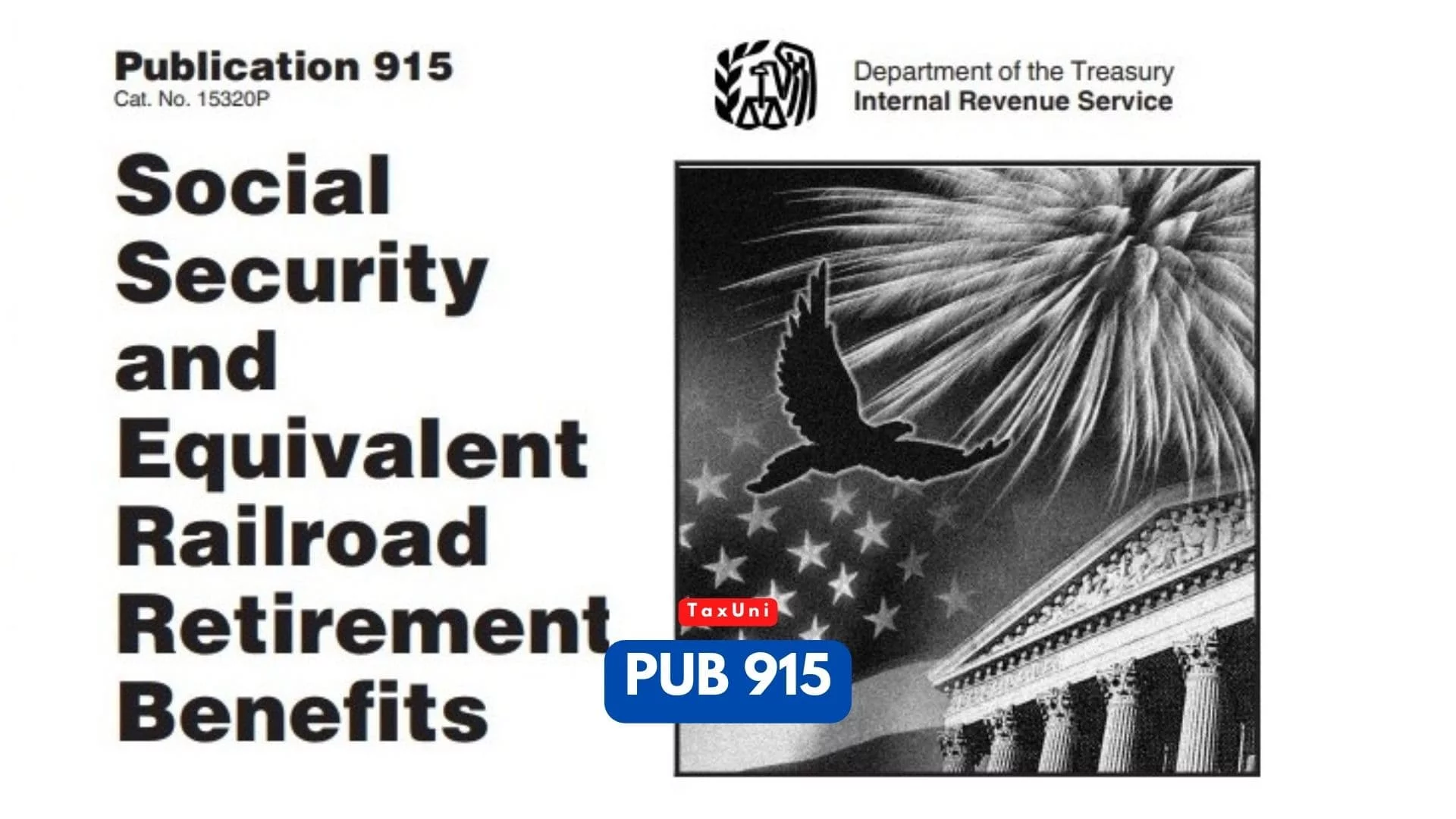Pub 915
Publication 915, or Pub 915, is a joint effort of the IRS and SSA and is published online and in print. This article will explain what IRS Publication 915 is, how it works, and how to use it to prepare your tax return.

Publication 915, Pub 915 for short, is the IRS’s publication on the tax rules for social security benefits and equivalent railroad retirement benefits. A Social Security benefit is a payment made by the government to people who meet certain criteria. It may come in the form of retirement benefits, survivor benefits, or disability benefits. These payments are based on a person’s earnings into the program.
IRS Pub 915, Social Security and Equivalent Railroad Retirement Benefits, covers a wide range of topics for older taxpayers. It answers questions that you may have about tax returns and filing procedures. It also provides a brief overview of some tax-related issues that are not covered in other free IRS publications. It is helpful for you to read it before you file your return, particularly if you have questions about certain deductions and credits. The publication also contains links to other free IRS publications that provide more detail on the topics it discusses. If you have questions about what you must report on your tax return, you can find answers in this publication or other publications available for download from the IRS website.

Social Security Benefits in Pub 915
A Social Security benefit is a payment made by the government to people who meet certain criteria. It may come in the form of retirement benefits, survivor benefits, or disability benefits. These payments are based on a person’s earnings into the program. Whether you receive Social Security benefits depends on the type of benefit you want, when you claim, and other factors. Depending on your circumstances, you can claim benefits as early as age 62 or as late as full retirement age (FRA).
Your Social Security benefits amount is based on the number of credits you’ve earned. You need to earn 40 credits or more to be eligible for retirement benefits. Collecting credits as you go is important because they can increase your Social Security benefit. If you’re not sure how many credits you’ve earned, a simple online calculator can help. Most Americans rely on Social Security to cover at least some of their income, especially in retirement. Without it, about 4 in 10 adults 65 and older would have incomes below the poverty line, all else equal.
Over one-third of all adults receive some or all of their income from Social Security, and a majority of the elderly rely on it to meet at least half of their living expenses. Estimates of reliance vary, and the percentages are much lower for aged individuals in the three lowest family-income quintiles than for those in the two highest.

Railroad Retirement Benefits in Pub 915
There are two main types of railroad retirement benefits– tier 1 and tier 2, and IRS Pub 915 covers Tier 1 benefits for you. Tier 1 benefits are paid to retired workers based on their years of railroad service. The amount is based on a formula that takes the average income for the five highest-earning years and multiplies it by 7/10 of 0.1%. These benefits are reported to beneficiaries on Form RRB-1099, similar to Social Security 1099 forms. Depending on your income, these benefits may not be taxable in Minnesota. A worker can begin receiving benefits at 60 if he or she has 30 years of qualifying railroad service, although early retirement reductions apply. Benefits can be reduced by 1/180 of a percent for every month up to 36 months before the recipient reaches full retirement age and then by 1/240 of a percent for each month after that.
Like Social Security, railroad retirement benefits are reduced if a beneficiary earns money outside of railroad employment. However, in 2025, a beneficiary can earn up to $21,240 per year without reducing railroad retirement benefits.In addition to the SSEB portion of tier 1, a special supplemental annuity is available for eligible workers who have at least 25 years of creditable railroad service that began before October 1981. This supplemental annuity is a smaller annuity payment that can help offset a spouse’s spousal or survivor’s annuity.





